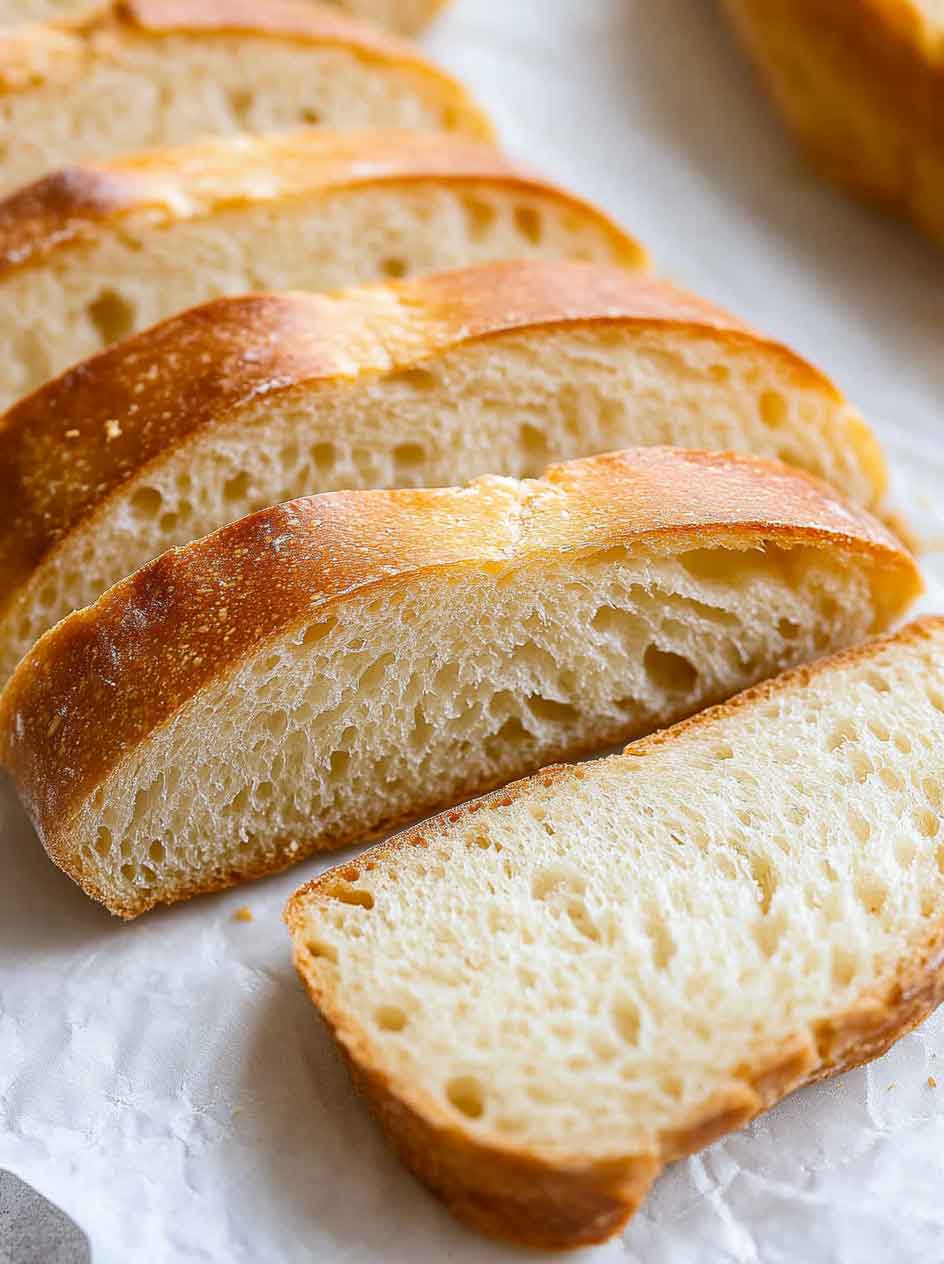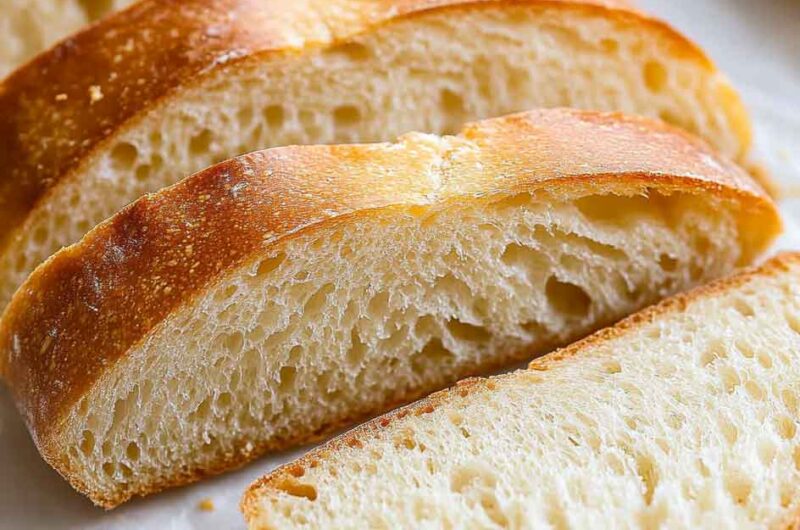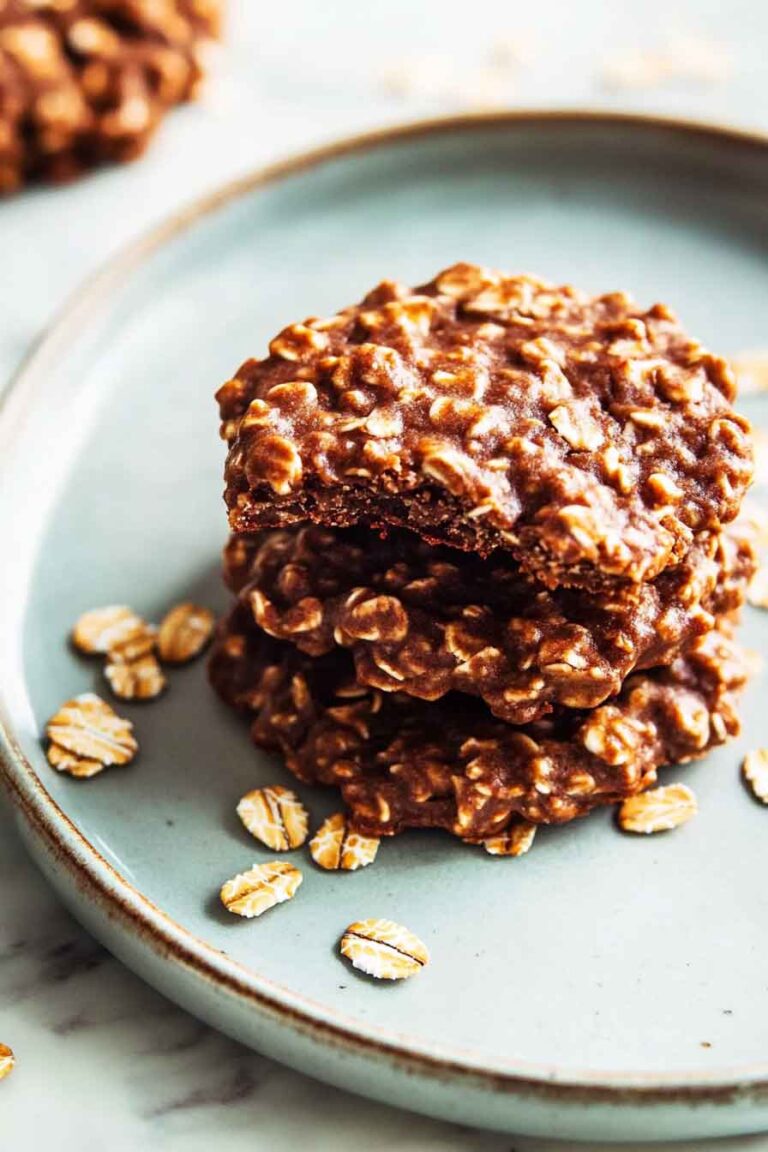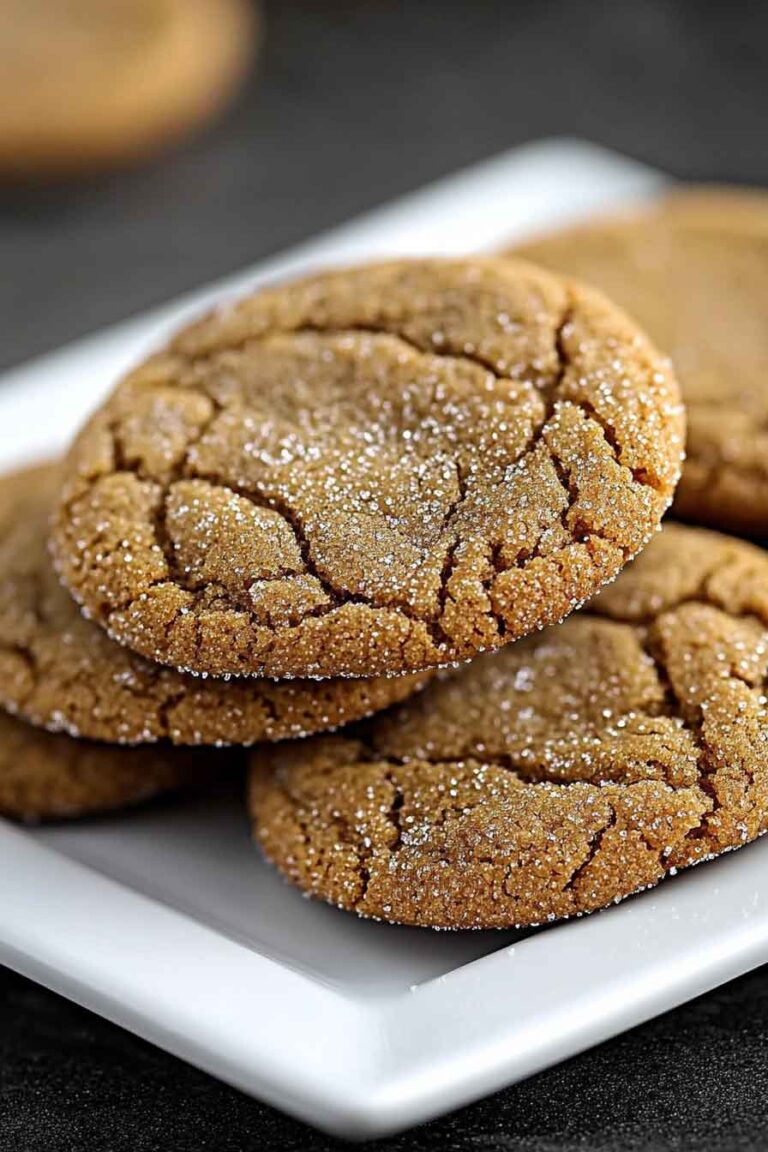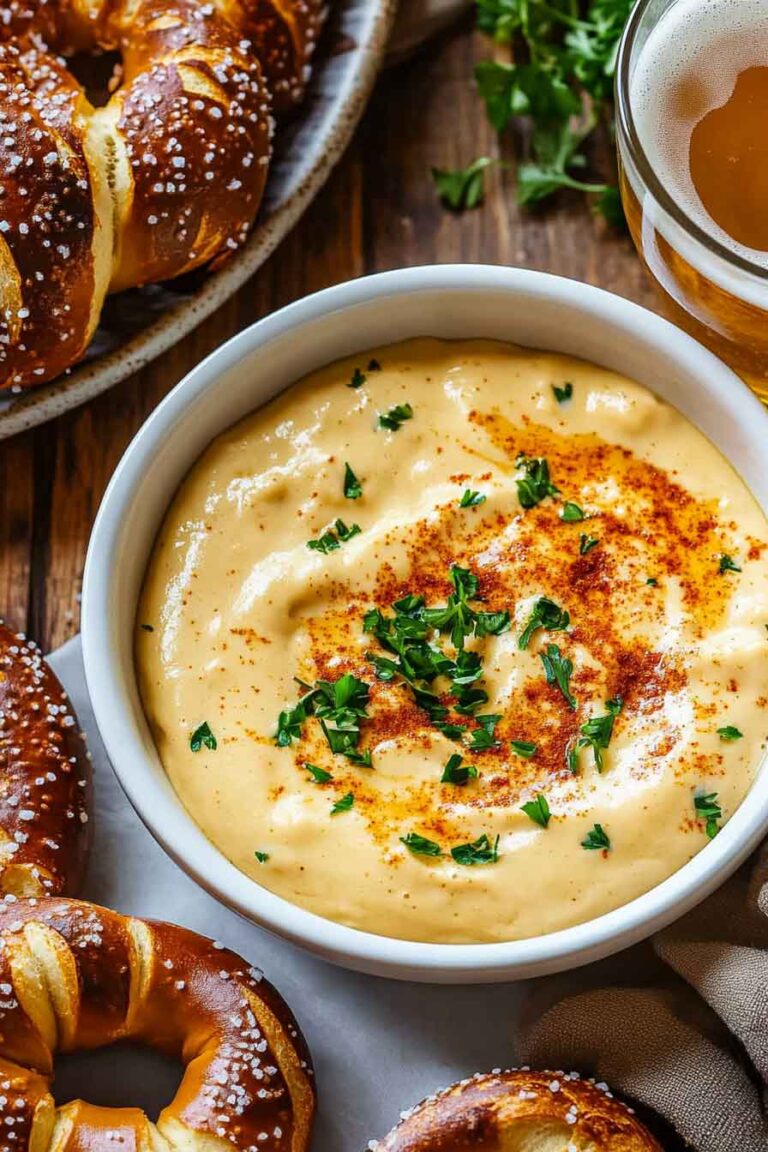Easy Homemade French Bread
Oh boy, have you ever smelled fresh bread baking in your kitchen? It’s pure magic! That warm, buttery scent fills the air, making your stomach rumble and your heart happy.
I used to think homemade French bread was tricky—something only fancy bakers could pull off. But guess what? It’s way easier than it looks, and the results? Wow. Soft on the inside, golden and crispy on the outside—just like the best bakery loaf!
Imagine pulling a warm, crusty loaf out of the oven, slicing it open, and slathering it with butter. It melts instantly, soaking into every fluffy bite. Trust me, once you try this, store-bought bread won’t stand a chance!
Ready to bake? Grab your ingredients, roll up your sleeves, and let’s make the easiest, most delicious homemade French bread ever. You won’t believe how simple it is!
Why You’ll Love This Recipe
- Simple Ingredients: Made with basic pantry staples, no fancy equipment needed.
- Crispy & Chewy: Golden crust with a light, fluffy interior.
- Beginner-Friendly: Straightforward instructions make it easy to follow.
- Versatile: Perfect for dipping, toasting, or as a side to soups and pasta.
- Fresh & Homemade: No preservatives, just real, fresh-baked goodness.
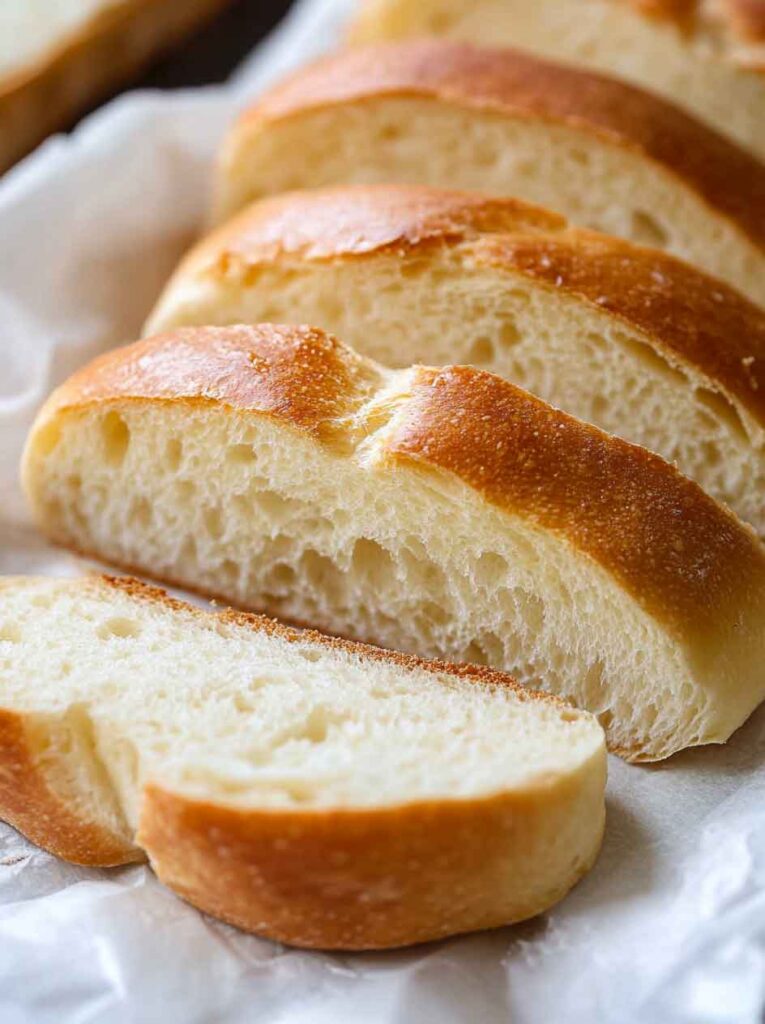
What You Need to Know Before You Start
- Prep & Bake Time:
- Prep Time: 20 minutes
- Rising Time: 2 hours (divided)
- Bake Time: 25 minutes
- Total Time: About 3 hours
- Yield:
- Makes 2 large French bread loaves.
- Difficulty Level:
- Easy for beginners, rewarding for experienced bakers.
Required Kitchen Tools
- Large mixing bowl
- Measuring cups & spoons
- Dough scraper (optional but helpful)
- Baking sheet
- Parchment paper
- Sharp knife or bread lame
- Pastry brush (for butter, optional)
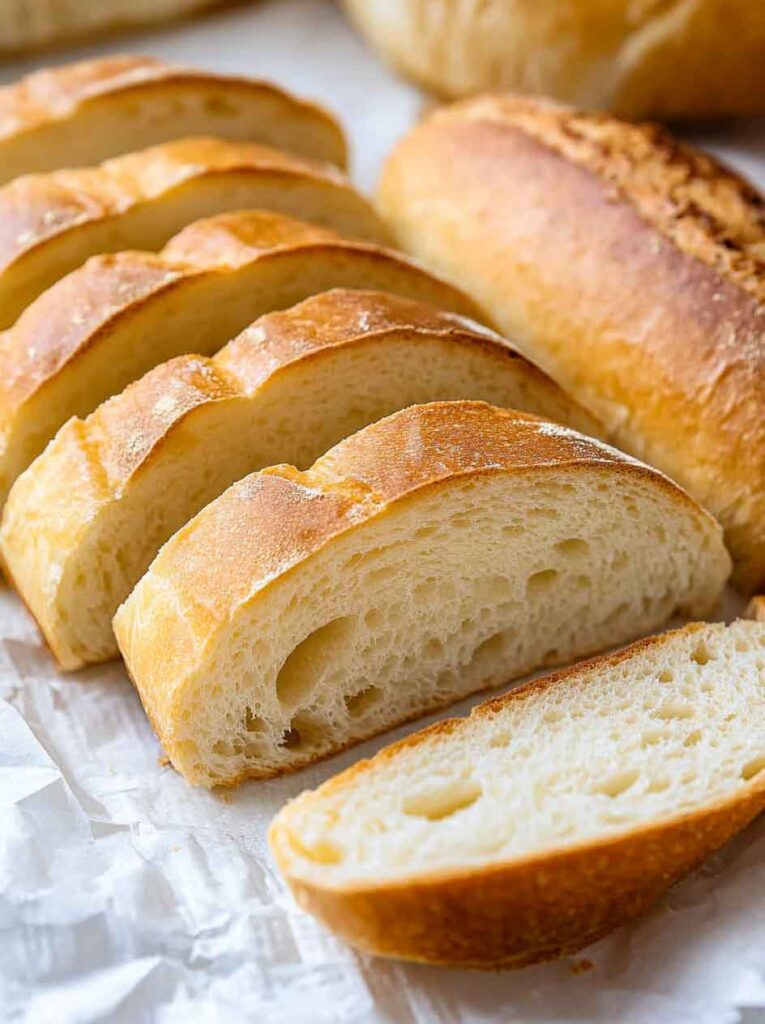
Ingredients for Homemade French Bread
Here’s what you’ll need to make this classic bread:
- 1 ½ cups (355ml) warm water (about 110°F or 43°C) – helps activate the yeast.
- 2 ¼ teaspoons (1 packet) active dry yeast – essential for the rise and airy texture.
- 1 tablespoon granulated sugar – feeds the yeast and enhances browning.
- 4 cups (500g) all-purpose flour (or bread flour) – provides structure and chewiness.
- 1 ½ teaspoons salt – enhances flavor.
- 1 tablespoon olive oil – adds moisture and improves texture.
- 1 tablespoon melted salted butter (optional) – brushed on top for a richer crust.
Variations & Substitutions
- Use Bread Flour: Bread flour gives a slightly chewier texture but all-purpose flour works well too.
- Whole Wheat Option: Substitute up to half the all-purpose flour with whole wheat flour for a heartier loaf.
- Garlic & Herb French Bread: Add 1 teaspoon garlic powder and 1 teaspoon dried Italian herbs for extra flavor.
- No Butter? No Problem: Skip the melted butter or use olive oil for a dairy-free option.
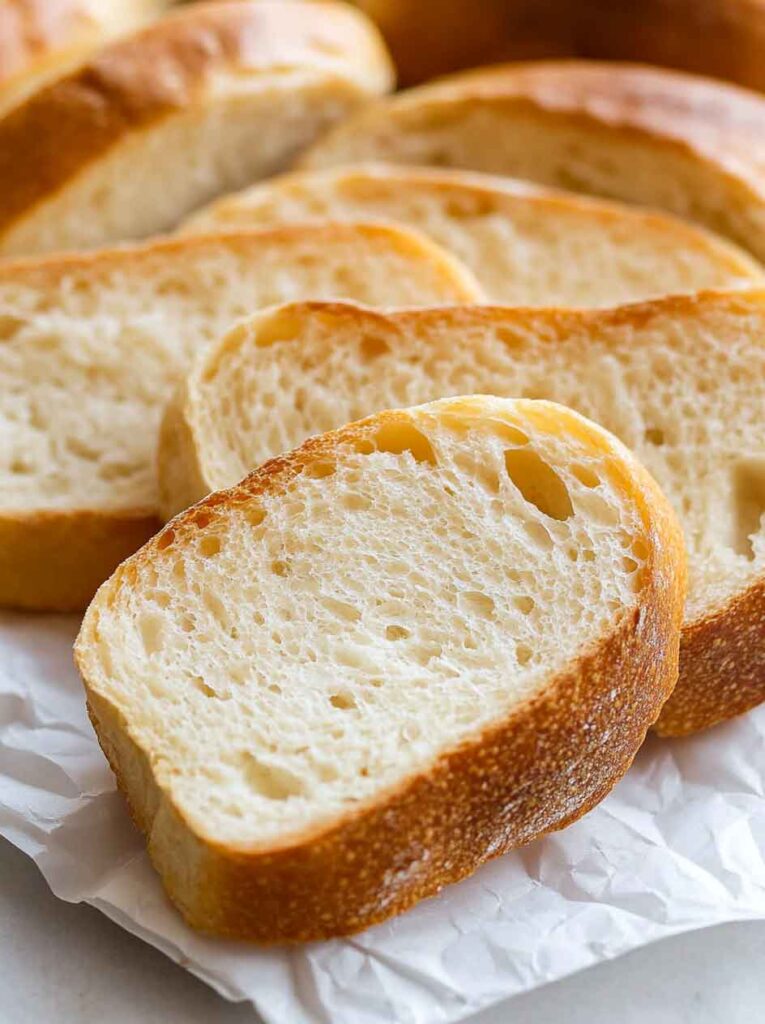
Step-by-Step Instructions to Make French Bread
Step 1: Activate the Yeast
- In a large mixing bowl, combine warm water and sugar. Stir until the sugar dissolves.
- Sprinkle active dry yeast over the water and let it sit for 5-10 minutes, until it becomes foamy. This indicates that the yeast is active.
Step 2: Make the Dough
- Add olive oil and salt to the yeast mixture.
- Gradually add flour, one cup at a time, mixing with a wooden spoon or dough hook attachment if using a stand mixer.
- Once the dough comes together, transfer it to a lightly floured surface.
Step 3: Knead the Dough
- Knead the dough for 8-10 minutes, until it becomes smooth and elastic.
- If the dough is too sticky, sprinkle in a little more flour, one tablespoon at a time. Avoid adding too much flour, as it can make the bread dense.
Step 4: First Rise
- Lightly grease a large bowl with olive oil and place the dough inside.
- Cover with a clean kitchen towel or plastic wrap and let it rise in a warm place for 60-90 minutes, or until doubled in size.
Step 5: Shape the Loaves
- Once the dough has doubled in size, punch it down to release excess air.
- Transfer it to a lightly floured surface and divide it into two equal portions.
- Roll each portion into a rectangular shape, about 10–12 inches long.
- Starting from the long edge, roll the dough tightly into a log, sealing the seam by pinching it.
- Place the loaves seam-side down on a baking sheet lined with parchment paper.
Step 6: Second Rise
- Cover the shaped loaves with a kitchen towel and let them rise again for 30–45 minutes, until puffy.
- While the dough is rising, preheat your oven to 375°F (190°C).
Step 7: Score and Bake
- Using a sharp knife or bread lame, make 3–4 diagonal slashes on each loaf to help with even baking.
- Bake in the preheated oven for 22–25 minutes, or until the crust is golden brown and the bread sounds hollow when tapped.
Step 8: Optional Butter Glaze
- Remove the bread from the oven and immediately brush with melted butter for a soft, flavorful crust.
- Let the loaves cool on a wire rack for at least 10–15 minutes before slicing.
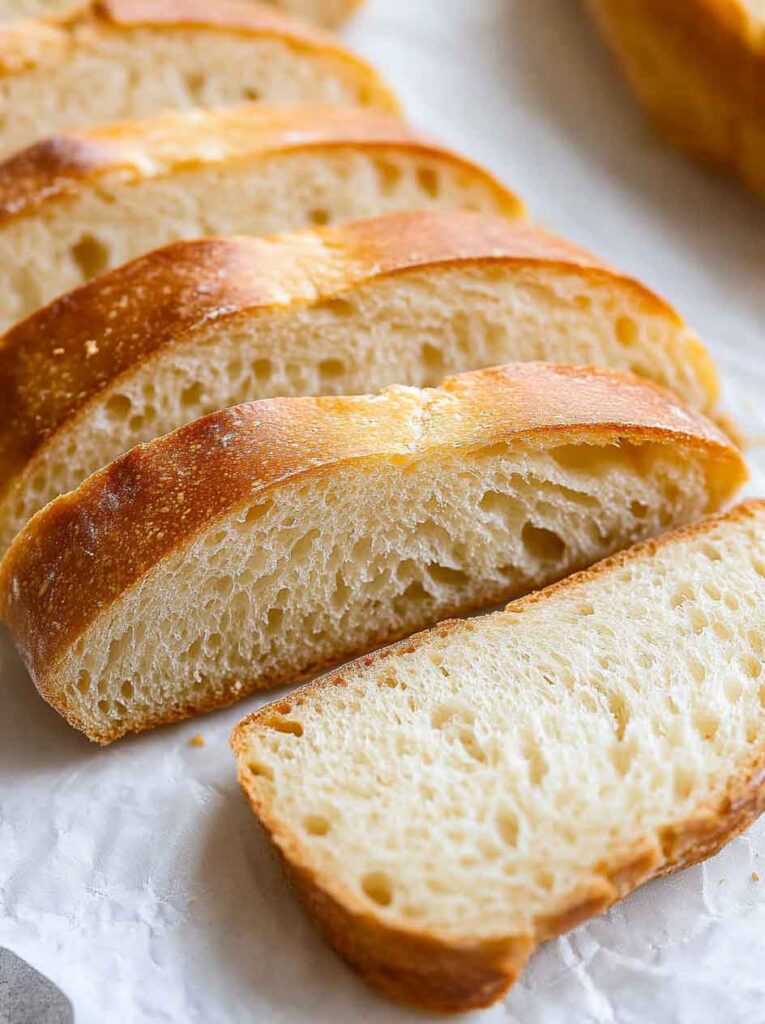
Serving and Storage Tips
How to Serve French Bread
- Fresh and Warm: Enjoy it plain, slathered with butter, or dipped in olive oil and balsamic vinegar.
- Garlic Bread: Slice, spread with garlic butter, and toast for an easy side dish.
- Sandwiches: Use for hearty sandwiches or paninis.
- Soups and Stews: Perfect for dipping into broths, soups, and sauces.
Storing French Bread
- Room Temperature: Keep in a paper bag or wrapped in a clean kitchen towel for up to 2 days.
- Freezing: Wrap in plastic wrap and aluminum foil; freeze for up to 3 months. Thaw at room temperature and reheat in the oven at 350°F (175°C) for 5-10 minutes.
- Reviving Stale Bread: Sprinkle with a little water and warm it in the oven at 300°F (150°C) for 5-7 minutes.
Nutrition Information (Per Slice, Approximate)
| Nutrient | Amount |
|---|---|
| Calories | 140 |
| Carbohydrates | 28g |
| Protein | 4g |
| Fat | 1.5g |
| Saturated Fat | 0.5g |
| Sodium | 290mg |
| Fiber | 1g |
| Sugar | 1g |
Note: Nutritional values vary depending on portion size and ingredient brands.
Homemade French Bread
Course: Recipe2 large loaves
servings20
minutes2
minutes140
kcalIngredients
1 ½ cups (355ml) warm water (110°F or 43°C)
2 ¼ teaspoons (1 packet) active dry yeast
1 tablespoon granulated sugar
4 cups (500g) all-purpose flour (or bread flour)
1 ½ teaspoons salt
1 tablespoon olive oil
1 tablespoon melted salted butter (optional, for brushing)
Directions
- Activate the Yeast: Mix warm water and sugar in a bowl. Sprinkle yeast and let it sit for 5–10 minutes until foamy.
- Make the Dough: Add olive oil and salt, then gradually mix in flour. Stir until combined.
- Knead the Dough: Knead on a floured surface for 8–10 minutes until smooth and elastic.
- First Rise: Place dough in an oiled bowl, cover, and let it rise for 60–90 minutes, until doubled.
- Shape the Loaves: Divide dough into two portions, roll into rectangles, and shape into logs. Place on a baking sheet.
- Second Rise: Cover and let rise for 30–45 minutes until puffy. Preheat oven to 375°F (190°C).
- Score and Bake: Slash the tops and bake for 22–25 minutes until golden brown.
- Optional Butter Glaze: Brush with melted butter and let cool for at least 10 minutes before slicing.
Frequently Asked Questions
Can I use instant yeast instead of active dry yeast?
Yes! Use the same amount, but you can skip the activation step and mix it directly with the flour.
Why is my bread too dense?
Over-flouring or not kneading long enough can lead to dense bread. Ensure proper kneading for a light, airy texture.
Can I make this bread ahead of time?
Yes! Shape the loaves, cover, and refrigerate overnight. Let them come to room temperature and rise before baking.
Conclusion
Homemade French bread is easier to make than you think! Whether you enjoy it fresh, toasted, or turned into garlic bread, this simple recipe delivers bakery-quality results at home. Give it a try and enjoy the warm, crispy, and fluffy goodness.

